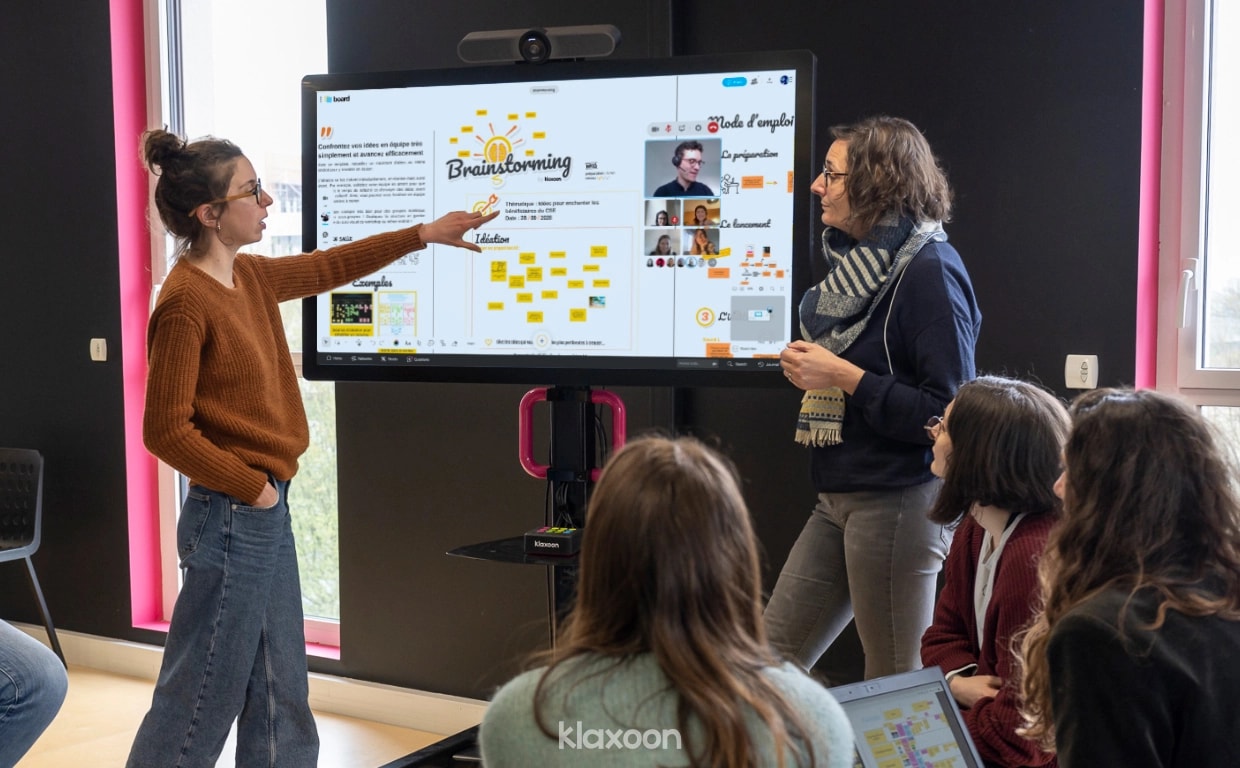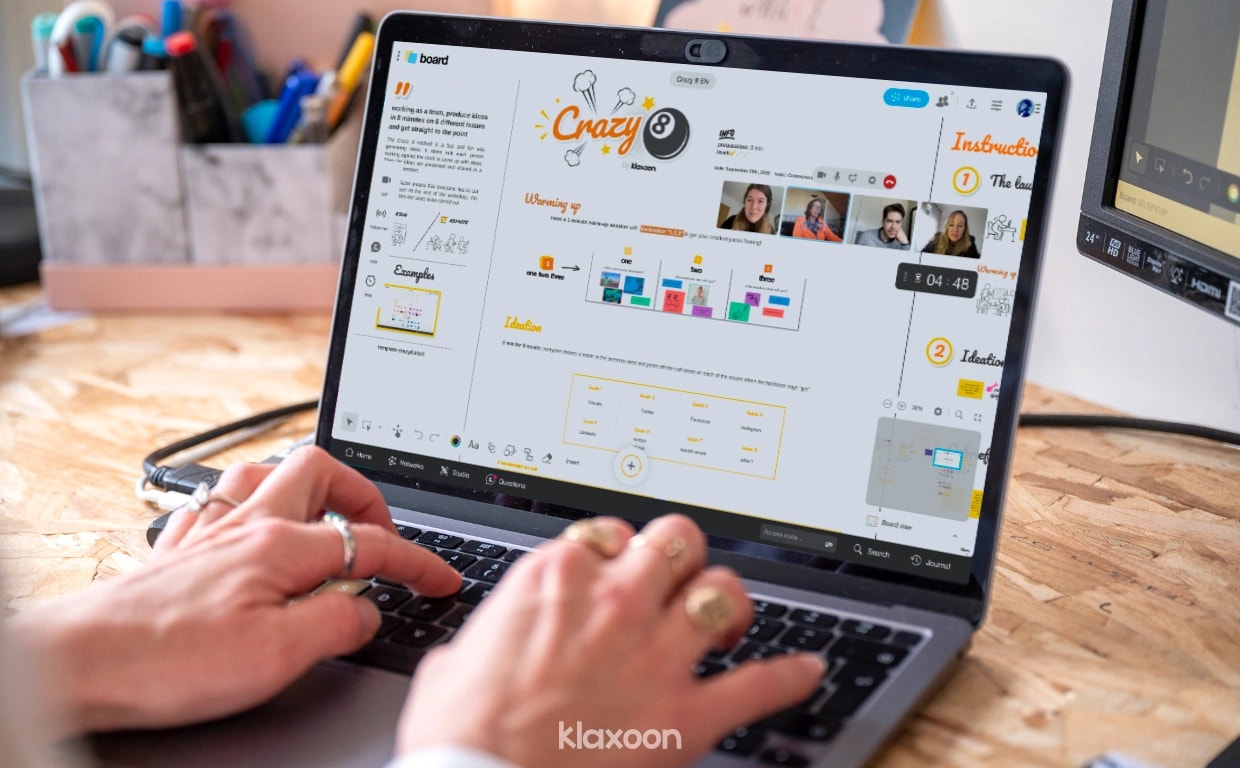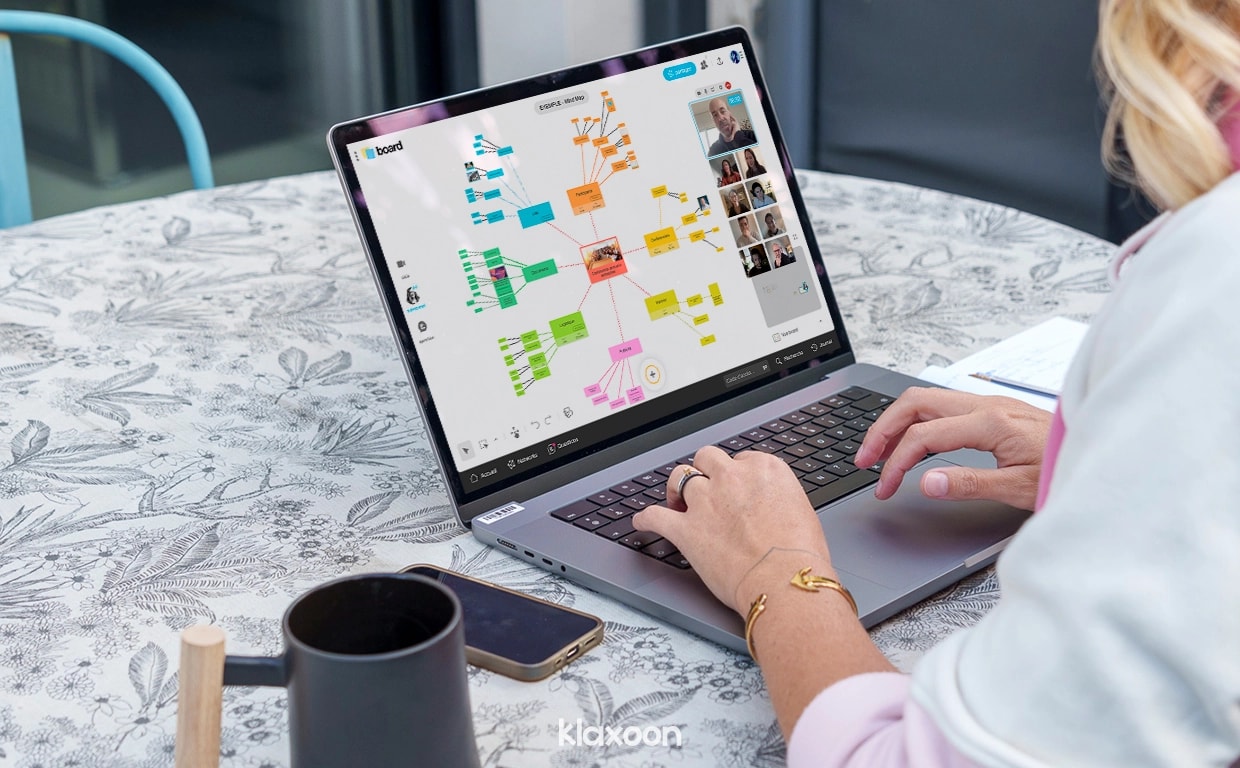6 mistakes to avoid for truly engaging brainstorming sessions
Published on February 14, 2025
6 mistakes to avoid for truly engaging brainstorming sessions
Brainstorming enables companies to continually innovate, generate new ideas and solve complex problems, in response to current market challenges. However, there are many biases that can affect the quality of your engaging brainstorming sessions:
We have probably all taken part in a company brainstorming session at least once. The least we can say is that two engaging brainstorming sessions have nothing in common.
The context, the issues to be addressed, the number of participants… there are multiple parameters that come into play that can have an impact on the final result. However, the objective remains the same: to generate a maximum number of innovative ideas as quickly and efficiently as possible, and to draw actionable conclusions.
Brainstorming is an ideation method developed in the 1940s, initially to generate new ideas for the advertising industry. Generally practiced in teams (although it can also be done solo), brainstorming involves a number of biases specific to group interaction. An article published by Insider estimates that the human brain operates on the basis of nearly 100 cognitive biases on a daily basis!
In this article, find out how to identify these biases in order to avoid their pitfalls, and ensure that all participants stay engaged and manage to express themselves efficiently.


Be more efficient and competitive in brainstorming by taking these pitfalls into account.
After all, why not? The group discusses either on video or in a room, we listen to each other, and of course we don't forget to take notes to capture all the ideas. What could possibly go wrong?
And yet, it's important to remember that the spoken word is not as inclusive as you might think, as a means of expression.
If it's the only channel available for proposing ideas during a brainstorming session, many people in your team are likely to self-censor or conform to the ideas expressed by the majority, through a bandwagon effect.
This cognitive bias can easily be found in politics and finance, but also in consumer behavior in relation to brand adoption. We are much more likely to buy a product or service if it has been recommended to us by those around us. And the more favorable reviews we see (sometimes just by seeing everyone around us with the latest IPhone Pro), the more likely we are to give it consideration.
In brainstorming, the bandwagon effect occurs when an idea is immediately put forward by several people in a group. This, even more so, when the people in question are extroverted and convincing; they quickly tend to structure the entire discussion around their idea, leaving the rest of the group in the background. This environment creates an unfavorable atmosphere where participants feel compelled to self-censor and lose confidence in their own ideas.
To avoid this, a good approach is to offer different times for ideation, first in writing, then orally. For example, the Crazy 8 method allows the group to list their ideas in writing only, and then gives everyone a set amount of time to present their ideas orally. This way, you can be sure that no idea is left aside in favor of another, and that everyone has the opportunity to express themselves depending on what suits them best.


The Crazy 8 method allows people who are more comfortable with writing to also share their ideas with the team.
Confirmation bias is the human tendency to place greater value on information that confirms pre-established beliefs.
For example, let's say you had a bad experience with a CRM software several years ago. If you're now looking for new software for your team's needs, you're likely to dismiss the one that was the source of your setbacks in the past, even if it's likely to have been improved since then.
And even if several comparison sites tell you that it's now the best software on the market with the most positive feedback, chances are you'll focus on the few existing negative references to convince yourself that it's not worth it.
In a group brainstorming session, confirmation bias plays a crucial role in the decision-making process. Once all ideas have been collected, the team needs to make an objective decision to select the top 5 or top 10 ideas for the next stages. However, the reasons why a particular idea may win the group's support also depend on each individual’s own experiences and beliefs, even unconsciously.
This natural bias runs counter to the need for an objective framework for effective brainstorming decisions.
What can we do about it? One effective approach is to use the reversed brainstorming or Worst Case Scenario method. In this method, the initial step involves collecting ideas centered around an objective that is the opposite of your own (such as "how to decrease customer satisfaction" instead of "how to enhance customer satisfaction"). Subsequently, these ideas are reversed, resulting in a transformation from negative to positive ("being disrespectful to customers" becomes "being respectful to customers").
Reverse brainstorming can help you deconstruct preconceived beliefs, and give you a fresh approach to ideas that might not otherwise have seemed so obvious.
Another effective brainstorming technique for countering confirmation bias is the 1-2-4-All method. This involves confronting ideas in 4 stages with the team, to minimize the impact of personal subjectivity:
In brainstorming, the team's commitment and cohesion during the session have a considerable impact on the quality of the ideas generated. When all group participants are motivated, focused and sometimes even challenged to give their best, you are more likely to interact naturally, and bounce ideas off each other with relevance.
To develop this collective intelligence, it's essential to prepare the ground well before launching your brainstorming session. The group needs to feel at ease, and each participant needs to feel confident that he or she can express him, or herself, without judgment, and that his or her ideas will be valued. However, this climate of trust won't come naturally, especially between people who don't know each other.
So what's the best way to awaken your team's creativity, and launch a brainstorming session in optimal conditions? There’s nothing like an icebreaker! In just a few minutes, these activities are perfect for identifying all your contacts and getting to know them through play or sharing, whatever the context:
If you're looking for icebreaker ideas that match your needs, you're bound to find one in Klaxoon's template library:
Brainstorming may be a spontaneous method of thinking, but it needs to be structured to be effective! If you find yourself in a workspace, whether physical or virtual, in which the group lacks reference points, the participants' first reflex will be to try to create their own, even if this means deviating from the subject too much.
What's more, according to a French study published by IFOP in 2018, 42% of executives surveyed felt that their meetings or workshops were not properly prepared.
To keep the group focused with clear ideas, make sure you prepare a visual and intuitive space for reflection. Participants need to feel guided at every stage of the brainstorming process, so that they can understand in a matter of seconds what is expected of them.
In this context, tools and methods based on visual management can help you provide a real framework for your sessions.
Visual management is based on a set of principles and techniques that capitalize on our brain's ability to assimilate and retain what we see more easily. It has many applications, particularly in UX, but also in teamwork in the broader sense.
For example, collaborative platforms and online whiteboards are tools directly associated with visual management. And when it comes to brainstorming, you can easily prepare your thinking space in advance on an online whiteboard.
Good news: whiteboarding doesn't mean you're starting from scratch! As we've already seen, many ready-to-use methods directly inspired by brainstorming (mind mapping, World Café and many others) give you a predefined structure for your session. Then all you have to do is invite your participants and kick off the session using anintegrated videoconferencing tool (or directly in person)!


At a glance, mindmapping lets you visually organize and prioritize your ideas.
And even if a few adjustments may be necessary to adapt a brainstorming template to your specific needs, be sure this time will be amply repaid by the efficiency you'll gain in your exchanges during the session.
When brainstorming, it can be tempting to put all the team's energy into the ideation phase. Yes, that's the whole point of the exercise, and you'll want to gather as many ideas as possible to fuel your thinking.
At this point, whatever the format of the session and the size of the group, there is a risk of losing effectiveness in the next phase of taking action, due to too many scattered ideas.
This is because our brain strives to simplify the world around us as much as possible. Giving it too many options (usually 7 choices - plus or minus 2 - according to Miller's Law) will tend to generate confusion.
So, if you don't start categorizing your brainstorm-generated ideas quickly, the team may feel discouraged by so many possibilities by the time they reach the selection phase. This will make it more difficult to plan concrete actions at the end of the session, without losing ideas along the way.
Working from Klaxoon's visual platform, you can easily remedy this situation, and structure your ideas to make them immediately actionable:


With dot-voting, you can see in seconds which ideas are preferred by brainstorming participants.
Who among us hasn't said to ourselves "Ah, but that's what I should have said!" three hours after a conversation? As with a good repartee, a good idea can sometimes come when you least expect it. But what if the brainstorming session is already over, and the workspace has been closed in favor of a summary e-mail?
To ensure that the whole team can continue to contribute even beyond the brainstorming meeting if they feel the need, there are ways to make your shared workspace more flexible. For example, a collaborative platform can make it easy to continue asynchronous exchanges:
This way, the team can approach your brainstorming sessions with complete peace of mind. Participants know that even if the right idea doesn't come up at the time, they'll have a chance to share it later. This means you can brainstorm more thoroughly, from anywhere, at any time!
To anchor this principle in a structured framework, however, we recommend that you give your team clear indications of the next steps in your brainstorming process. In this manner, each participant is aware of the allocated time for asynchronously contributing ideas before collectively transitioning to the next phase of the brainstorming process.
A successful brainstorming session is first and foremost an exchange with a defined framework, where each participant feels listened to and confident to share his or her ideas with the group, both during and after the session. By striving for this objective, you will swiftly increase your influence and be capable of conducting exceptionally productive and captivating ideation workshops.
These keys will enable you to immediately increase the productivity of your engaging brainstorming sessions, by thwarting all the biases that hinder innovation. If you'd like to see how brainstorming can help accelerate innovation and solve strategic problems in your company, give the Klaxoon visual platform a try, and get started with our brainstorming templates!
Unlock your teamwork potential